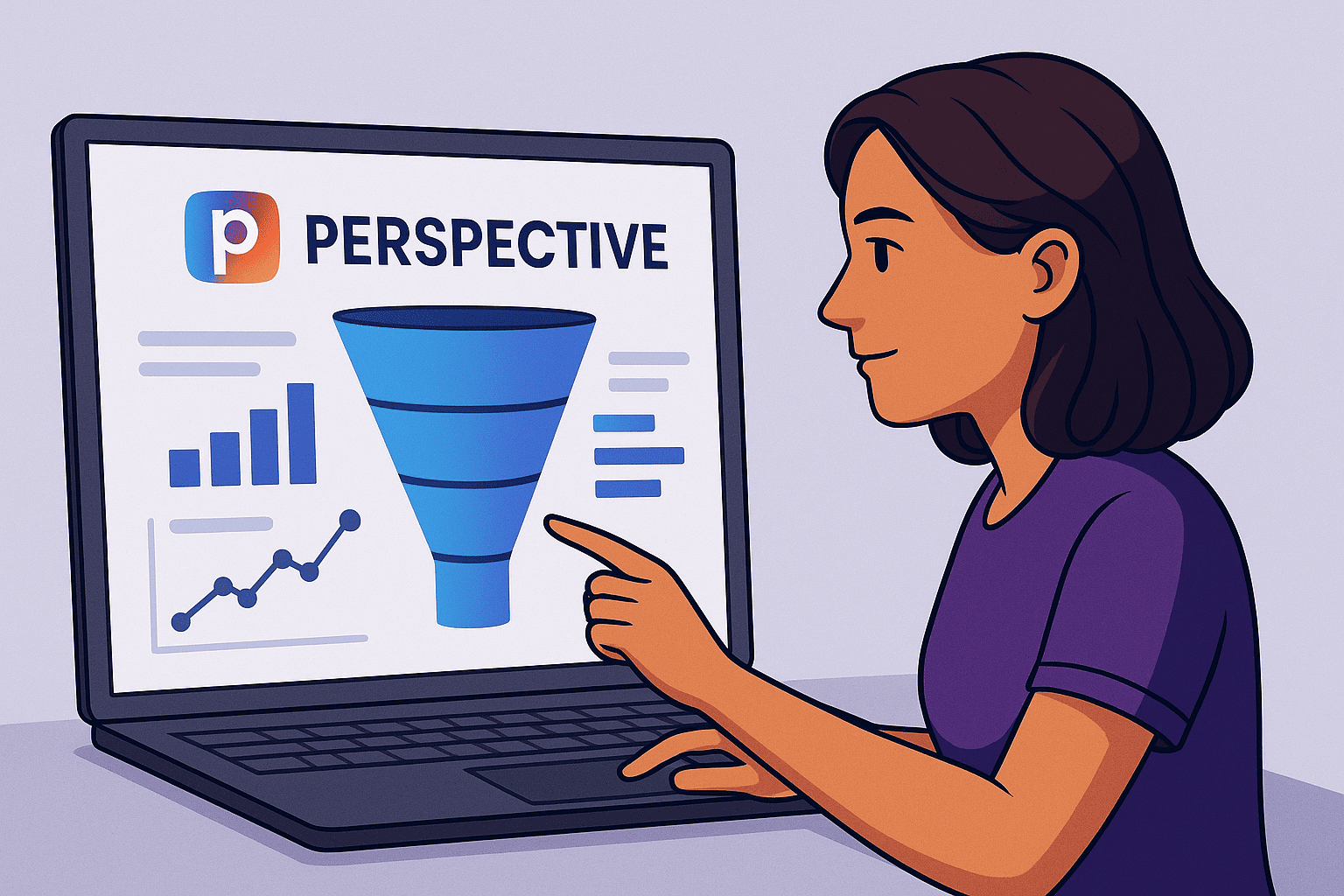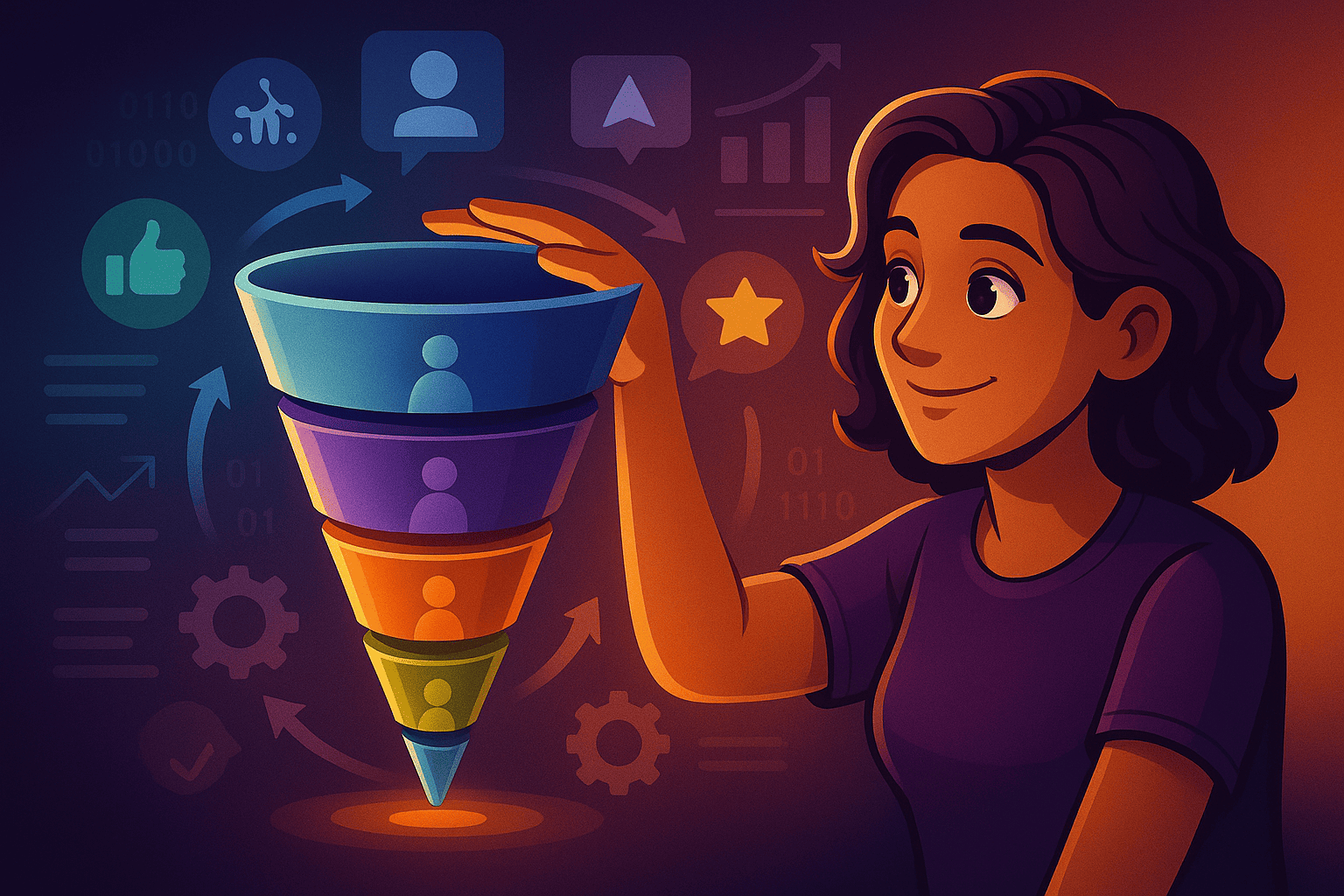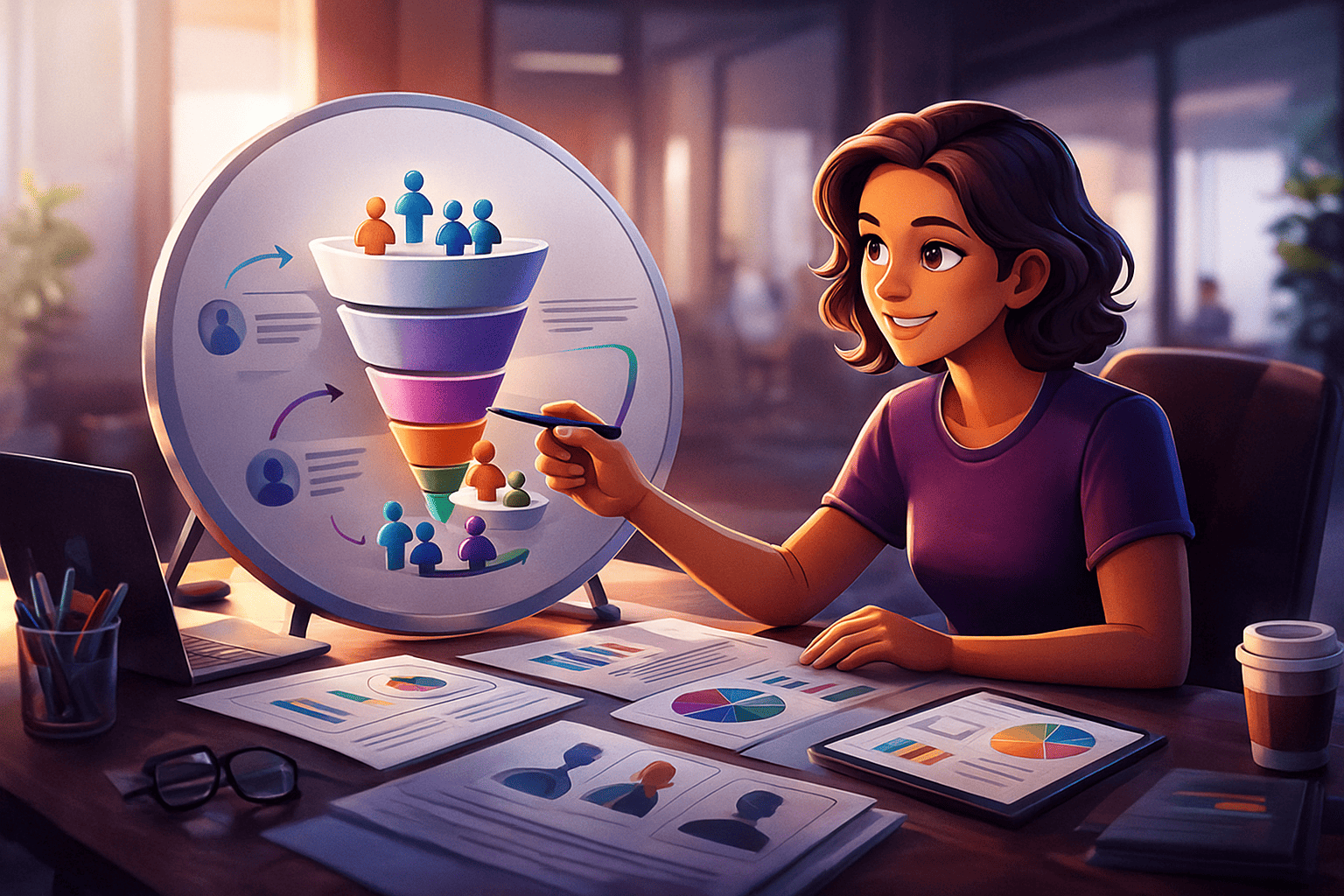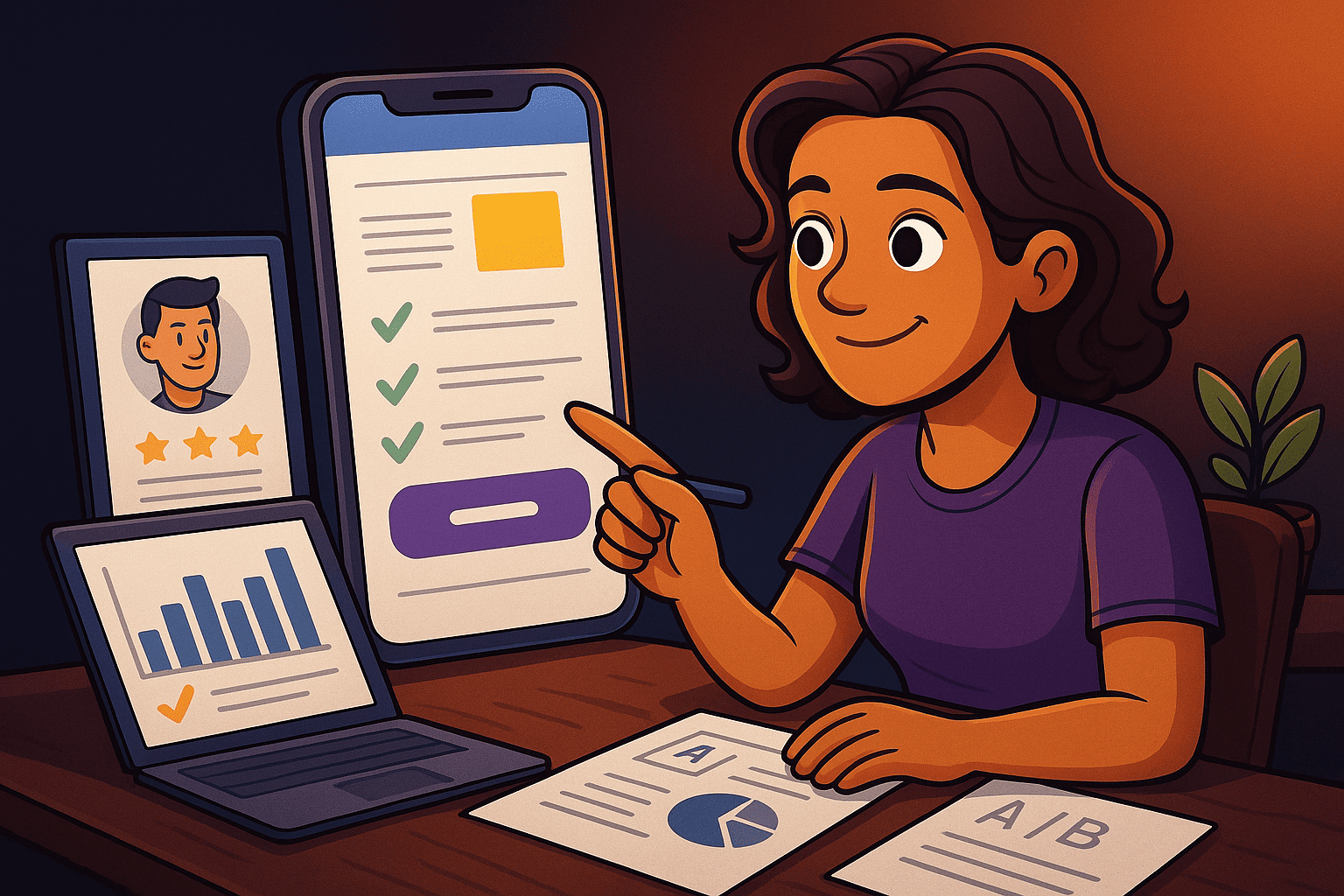The Perspective Funnel – Your Path to More Customers, Trust, and Brand Loyalty
You want a funnel that truly delivers? This guide clearly explains how to optimize every phase of your Perspective Funnel, build trust, and attract more qualified customers.


Why the Perspective Funnel Will Be Essential in 2025

A high-performing funnel now determines whether you consistently attract new customers or disappear in the digital noise. The Perspective Funnel goes far beyond traditional marketing logic by combining user psychology, data-driven decision-making, and modern personalization to guide prospects step by step into loyal customers and long-term brand advocates.
In this article, you’ll learn how a Perspective Funnel works, how to build it effectively, which mistakes you should avoid, and which 2025 trends will help you take your funnel to the next level. To understand how to manage this process with intention, it’s worth taking a closer look at the core idea behind a Perspective Funnel and what sets it apart from conventional models.
What Is a Perspective Funnel?
The Perspective Funnel describes the journey people take with your brand. From their very first interaction to long-term loyalty. Unlike traditional linear funnels, the Perspective Funnel is built on:
- targeted content for each phase,
- psychologically meaningful user guidance,
- personalization based on real user interactions,
- cross-channel touchpoints,
- data-driven optimization.
The goal: relevant experiences that build trust, simplify decisions, and create genuine loyalty. This makes it clear why a modern funnel is far more than a linear sequence. How this logic works in practice becomes evident in the four core phases of the Perspective Funnel.
The 4 Core Phases of the Perspective Funnel
Every funnel follows a basic logic. The Perspective Funnel refines this logic into four precise phases aligned with the customer journey:
1. Awareness – Creating Attention
In this phase, you become visible. Users should notice your offering for the first time. Without sales pressure, but with a clear and compelling benefit.
Typical content:
- Blog articles & SEO content
- Social media posts
- Videos, reels, short-form content
- Brand stories & expert positioning
Goal: Create relevance and spark initial interest.
2. Consideration – Building Trust
People compare solutions, evaluate options, and want to understand whether your product truly fits their needs.
Typical content:
- Whitepapers, guides
- Case studies
- Webinars
- Comparison or how-to content
Goal: Increase credibility and demonstrate expertise.
3. Decision – Creating Confidence
Decisions aren’t made through pressure, but through clarity, trust, and an intuitive offer that feels right.
Typical content:
- Testimonials
- Product demos
- Benefit-versus-objection content
- Verifiable social proof elements
Goal: Minimize perceived risk and make the buying decision easier.
4. Action & Retention – Strengthening the Relationship
After the purchase, the real work begins: deepening customer relationships and driving repeat business.
Typical content:
- Follow-up sequences
- Onboarding guides
- Community content
- Loyalty programs
- Product tips & updates
Goal: Build loyalty, encourage upgrades, and strengthen long-term retention. Once the fundamental structure is clear, you can begin building your own funnel strategically. The following steps show you exactly how to proceed.
How to Build Your Perspective Funnel Step by Step

1. Define your target audience precisely
A clearly defined target audience is the foundation of every successful funnel.
Here’s how to proceed:
- Collect quantitative data (analytics, surveys).
- Supplement it with qualitative insights (interviews, feedback).
- Create buyer personas including problems, goals, behaviors, and triggers.
Example: According to a McKinsey study (2023), companies with clearly segmented buyer personas achieve up to 20% higher conversion rates. If you know who you want to reach and what truly drives these people, you can move on to the next step and generate targeted attention for your brand.
2. Generate attention – without wasted reach
Focus on content and channels your target audience really uses.
Effective tactics:
- SEO content based on real search intent
- Social media formats with a clear value focus
- Influencer or expert partnerships
- Micro-storytelling with strong recognizability
Goal: Create first touchpoints that truly stick. Once users start to notice you, the next logical step is to deepen their interest and build an initial relationship.
3. Deepen interest & build relationships
Once users know you, you need to build trust.
Effective formats:
- Free resources with real, tangible value
- Regular newsletters
- Practical examples that show concrete results
- Live or on-demand webinars
Users want to understand: “Does this brand understand my problems, and can it really solve them?” The more trust you build, the more important it becomes to give potential customers guidance and support their decision-making in a clear and understandable way.
4. Make decisions easier – with psychological clarity
Decisions are rarely made purely rationally. People seek security.
So build on:
- Transparent product comparisons
- Traceable case studies
- Social proof that can be genuinely verified
- Clear CTAs without pressure
The more clearly you reduce perceived risks, the easier the decision becomes. Now you enter the phase where you can build true loyalty.
5. Strengthen customer retention & repeat purchases
A Perspective Funnel doesn’t end at the purchase – it effectively begins there.
Important measures:
- Smooth onboarding processes
- Targeted upsell and cross-sell impulses
- Personal follow-up
- Loyalty programs
- Regular product updates
Strong customer relationships significantly lower your CAC in the long run. Before we move into strategic fine-tuning, it’s worth looking at the most common mistakes that can slow your funnel down unnecessarily.
The most common funnel mistakes and how to avoid them

Error 1: Unclear goals
Without concrete KPIs, you have no way of knowing whether your funnel is working.
Solution: Define goals for each phase: leads, CTR, conversion rates, retention.
Error 2: Incorrect audience targeting
Messages that are too broad fail to resonate.
Solution: Segment your audiences and tailor content precisely to their needs.
Error 3: No mobile optimization
More than 60% of all funnel interactions in 2025 happen on mobile devices (Source: Statista, Q3 2024).
Solution: Responsive landing pages, short forms, check mobile-specific KPIs.
Error 4: Complicated processes
Too many steps = drop-offs.
Solution: Keep navigation, form structure, and checkout as simple as possible.
Error 5: Lack of analysis
Without consistent data analysis, your funnel stagnates.
Solution: A/B tests, session analysis, funnel tracking, CRO sprints. When these stumbling blocks are clear, you can focus on strengthening each funnel phase with the right content.
Content strategies for each funnel phase
Awareness: Visibility & reach
- SEO-optimized articles
- Social reels, TikToks, micro-videos
- Blog articles, listicles, guides
- PR and expert contributions
Consideration: Trust & expertise
- Whitepapers
- Case studies
- Webinars
- Expert interviews
Decision: Confidence & clarity
- Product comparison tables
- Demo videos
- FAQ blocks
- Social proof
Retention: Relationship & repeat purchases
- Onboarding videos
- Follow-up sequences
- Community content
- Product tips & updates
Once the content foundation is in place, the next step is to turn visitors into paying customers. This is exactly where conversion optimization comes into play.
Conversion optimization: How to make your funnel profitable

1. Strong landing pages
- Clear structure
- Precise language
- Visuals that reinforce the benefit
- Clearly visible CTAs
- Onepage layouts. They keep the user journey streamlined and clearly focused.
2. Social proof that works
- Customer testimonials
- Real case studies
- User numbers (if publicly verifiable)
3. Ensure mobile friendliness
All pages must work flawlessly on mobile.
Google has considered mobile experience a primary ranking factor since 2023.
4. Radically simplify forms
- significantly higher completion rates through logically structured steps
- less overwhelm because users see only one question at a time
- ideal combination of UX and psychology for maximum conversion
- Multi-Step Forms reduce complexity and keep users focused.
5. A/B testing & analysis
Continuously test CTAs, images, headlines, and layouts. To make these principles more tangible, it’s worth looking at how a Perspective Funnel functions differently depending on the industry.
Industry examples: How a Perspective Funnel functions differently
E-commerce
- Visual stimuli
- Product videos
- Retargeting after cart abandonment
SaaS
- Demos & trial versions
- Explainer videos
- Webinars for complex features
B2B
- Case studies
- ROI calculations
- Expert workshops
But a funnel is never static: New technologies and evolving user expectations continuously change how people make decisions. That’s why you should proactively future-proof your funnel.
Future-proof funnels 2025 – AI, automation & personalization

1. AI assistance & personalized experiences
- Dynamic content based on user behavior
- Personalized recommendations
- Automatic segmentation
2. Interactive formats
- Quizzes
- Interactive videos
- Dynamic landing pages
3. Automation & chatbots
- Instant responses
- Time-controlled campaigns
- Reduced workload for teams
4. Augmented Reality (AR)
- Virtual product try-ons
- Spatial product placements
(Use only if it makes sense for the specific industry)
Your funnel becomes especially efficient when you use tools that support you in implementation and this is exactly where Funnelforms shows its strengths.
How Funnelforms supports your funnel
Funnelforms enables you to create modern multi-step forms, logic paths, and funnel processes without any technical effort.
Thanks to:
- Simple drag-and-drop handling
- AI-assisted form generation
- Responsive designs
- Data-rich analytics
…your funnels become faster, more user-friendly, and measurably more effective. With this combination of strategy, structure, and the right tools, you are fully equipped to further develop your Perspective Funnel with intention. So you can determine which setup best matches your current stage of growth, here’s a quick overview of the Perspective plans.
Perspective Funnel Pricing – The Quick Overview

Flexible pricing structure for every business
Perspective offers four clearly defined plans, Base, Grow, Expand, and Scale, suitable for every stage of business development, from getting started to full-scale growth.
Perspective Funnel – Plans & Feature Overview
Base – For beginners & first funnels
- Funnels: 2
- Contacts: 50
- Domains: 1
- Key features: Basic features, CRM, metrics, integrations, weekly training
Grow – For growing businesses
- Funnels: 10
- Contacts: 250
- Domains: 3
- Key features: All Base features, A/B testing, custom paths, branding removal
Expand – For teams & scaling
- Funnels: 20
- Contacts: 500
- Domains: 10
- Key features: All Grow features, smart personalization, custom fonts, multi-recipient leads
Scale – For enterprise & high-growth
- Funnels: 60+
- Contacts: 2,000
- Domains: Unlimited
- Key features: All Expand features, CSM, unlimited workspaces & domains, full suite
What differentiates the plans
The pricing tiers mainly differ in:
- Quotas (funnels, contacts, domains, workspaces)
- Features (automation, personalization, A/B testing)
- Integrations (Zapier, Make, Meta Pixel, CRM)
- Team features & white-label options
- Support level
Decision guide – Which plan is right for you?
1. Base – If you’re just getting started
Ideal if you want to set up your first mobile funnels and need solid core features.
2. Grow – If you want to scale results
Perfect once you need more funnels, A/B testing, or more professional workflows.
3. Expand – If your team is growing
Well suited when multiple people, clients, or workspaces need to work in parallel.
4. Scale – If your company is growing fast
The best choice for enterprise setups, maximum capacities, and dedicated support. With this overview of features and price levels, you now have a solid foundation to choose the right Perspective plan. Time for a final conclusion.
Conclusion
The Perspective Funnel is far more than a marketing funnel. It is a structured system that connects psychological principles, strategy, content, and technology. When you consciously optimize each phase and use modern tools, you create customer experiences that have a lasting impact and strengthen your brand over the long term.






